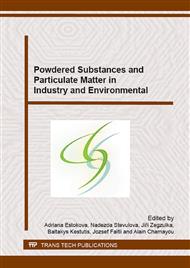p.108
p.114
p.121
p.130
p.140
p.146
p.153
p.161
p.171
Mechanical Properties of Mortars Prepared by Alkali Activated Fly Ash Coming from Different Production Batches
Abstract:
Fly ash is a well utilizable secondary raw material for the production of alkali activated construction materials. It is a significant alumina-silicates source suitable for the chemical reaction resulting in hardened composites. Physical and chemical properties of fly ashes as a co-product of coal burning mainly depend on characteristics of coal, burning temperature and combustion conditions. High variability of the properties of fly ash causes an uncertainty in the properties of alkali activated mortars. Time behaviour of the composition of the fly ash produced in a heating plant located in Košice, Slovakia as well as leaching behaviour of both alumina and silica from particular batches during one-year period was documented. Leaching tests were carried out using the distilled water and alkali solutions with three different concentrations. Both compressive and tensile strengths of alkali activated mortars were measured, and the correlation between the mechanical properties of hardened mortars and the chemical composition of fly ashes as well as their leaching characteristics was investigated.
Info:
Periodical:
Pages:
140-145
Citation:
Online since:
October 2015
Authors:
Price:
Сopyright:
© 2016 Trans Tech Publications Ltd. All Rights Reserved
Share:
Citation:


